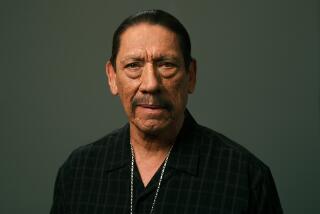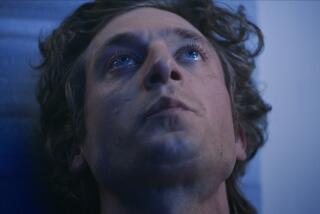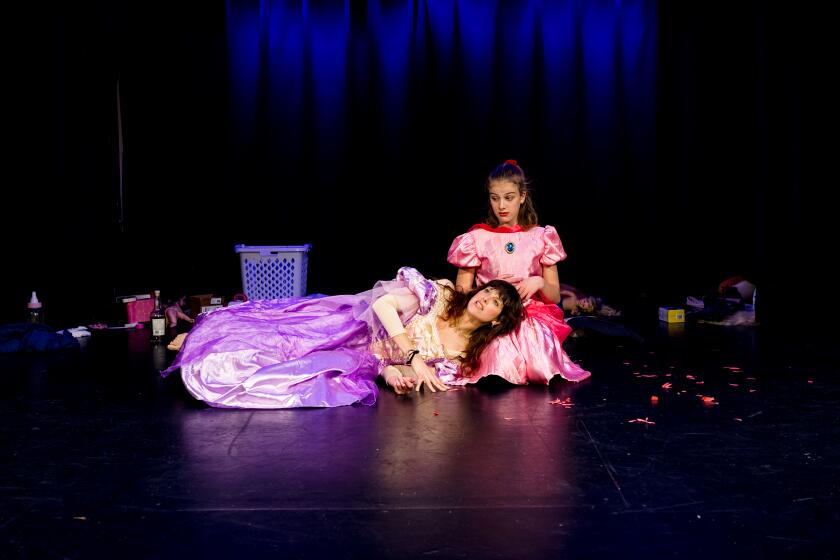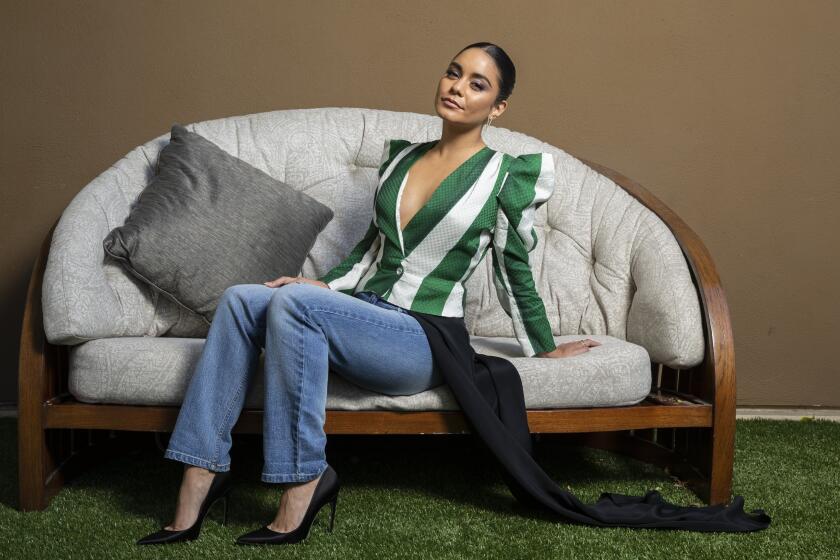Life, seen and shared
IN the Robert Altman film “Vincent & Theo,” adapted from the letters of Vincent van Gogh and his brother Theo, footage of the 1987 Christie’s London auction of “Sunflowers,” which sold for $39.9 million, is intercut with the artist lying on a straw mattress in his garret in Belgium, penniless yet unrepentant, while his younger brother and thankless patron assails him for his financial drain on the family.
“Do you always have to go so far on principle, Vincent, or does it just come naturally?” asks Theo, as the rising bids and astonished gasps continue on the soundtrack.
“I think if you do something, you should do it properly, don’t you?” says Vincent.
This was a favorite scene and recurring touchstone for the late photographer James Fee, according to cinematographer Robert Brinkmann, his friend and benefactor. When they met, Fee was a 42-year-old ex-fashion photographer who had driven a Porsche, married models and racked up enough darkness visible to want to draw a line through his life and focus on what still mattered. Brinkmann, in turn, was a 30-year-old German-born USC graduate who had shot most of the U2 documentary “Rattle and Hum” and had neither the money nor, he thought, inclination to become an art collector. The bond between them, born in an instant 15 years ago and stretching into the many tens of thousands of dollars, saw Brinkmann through relative Hollywood success (“The Cable Guy,” “Rules of Attraction”), a five-year marriage (to actress Mena Suvari) and the most complete collection of Fee’s work in existence. It carried Fee himself through late acclaim, hard-won serenity and finally the withering permutations of the cancer from which he died in September at age 57. Now left behind with the spoils of his patronage, Brinkmann says he’s intent on giving it away.
“For a while, I was essentially working and splitting my salary with James,” says Brinkmann, today a still-youthful 45, with a clarity of focus that bespeaks both his chosen occupation and the requirements of an almost accidental philanthropy. “At first, it was just a good deal: It was supposed to be $10,000 for a year, but it went way beyond that in terms of time, money, everything. And so somewhere my thinking shifted, and I decided I’ve put so much money into this, maybe it’s a good investment. And then it got to, ‘Well, I’ve got so much of this stuff now, we’ve been doing it for so many years, I’ll basically have this nice collection and it will mean something.’ And now that James is gone, all of those considerations have morphed again. Now all I really care about is that his legacy be preserved and that the work survives. Deal, investment -- all that stuff is gone; I’m essentially giving it away, if I can find the right home and make sure that the work is seen.”
The pair first met through Marina Sargenti, currently a reality TV director and executive producer, then Brinkmann’s partner in a video production company. She had just directed her first feature, “Mirror, Mirror,” which Brinkmann had shot. Asked to choose a photographer for routine head shots, she opted for “these dark, moody, contrasty pictures,” Sargenti says. “When I gave them to my agent, her face just dropped.” Sargenti dragged Brinkmann first to lunch with Fee and then to a makeshift gallery showing above a bookstore on La Brea and quickly found herself superfluous as the two forged a friendship.
“Robert saw something in James and stuck by him when other people didn’t get it,” says Sargenti. “I can’t say enough about his loyalty but also just sticking by his guns. A lot of people don’t have that tenacity -- especially in Hollywood -- because they’re just going off of what other people tell them and the buzz. They’ll help somebody out, and if things don’t happen big for them, they just kind of dump them.”
Photographs that have ‘something to say’
“I’M a visual artist, and I pride myself on at least being able to tell if something is quality,” Brinkmann says. “This was in the post-Reagan era, and I just had a visceral reaction to that work. It wasn’t vapid; it wasn’t a photograph of Madonna in a bustier. It had something to say about who we are and where we live.”
Brinkmann bought a single print from Fee that first night for a few hundred dollars and left the door open for future deals. Months later, Fee brought over the first 20 images of what would become his “Photographs of America” series, pictures of decaying houses and factories built during World War II, now memento mori of the apex of the American Century. He also came with a sporting proposition: 100 pictures for $100 each, far below his initial asking price, spread out in increments of 20, with the money paid up front, before the photographs were taken. Eventually, that expanded to include plane tickets, frequent flier miles, free helicopter rides from pilots Brinkmann had befriended and numerous other creative subsidies. In “The Truth About Cats and Dogs,” for example, which Brinkmann shot, Ben Chaplin plays a photographer, and Fee’s prints -- particularly of the once-mighty ocean liner the United States, now dry-docked and abandoned -- are prominently displayed throughout the character’s loft. Even weeks before Fee’s death, Brinkmann was still financing his work.
“He would literally be lying in his bed at home,” says Brinkmann. “At this point his medical bills are skyrocketing, he’s doing very badly, and I would come in and give him a couple thousand dollars in hundred-dollar bills, and he would just take it and hand it over to the digital printer. Even at that point, when he really needed whatever he could get, he just could not stop.”
Weston Naef, curator of photographs for the J. Paul Getty Museum, to which Brinkmann is in the process of donating a series of 20 prints from the “Photographs of America” series, cites photographers Alfred Stieglitz and Paul Strand or painter Paul Cezanne as examples of artists with exclusive collectors, as well as the painter Thomas Eakins, most seriously collected by his students, as proof that patronage can operate within modest means. “We like photographers who have committed collectors,” Naef says. “It’s a kind of litmus test -- you know that the work speaks to at least one person. This is not a princely type of collecting; this is done out of the heart and the soul.”
And yet, Fee’s dealer, Craig Krull of Craig Krull Gallery at Bergamot Station in Santa Monica, notes that Brinkmann’s efforts went beyond collecting into the realm of private sponsorship: tracking down rare Hungarian paper, since outlawed for its high levels of cadmium (“At one time, I know he was in competition with Sally Mann over the last remaining roll of some sort of paper,” Krull says), or the selenium toner needed for duotone solarization, now rarely used because of its toxicity. Unlike most patrons, Brinkmann supported the work sight unseen.
“It’s a fantastic idea, but it takes a lot of trust in an artist for someone to do that,” Krull says. “He lived and breathed through and for his work. But at that point in James’ career, he didn’t have the reputation he does now. That’s a different statement than someone who just writes a check and expects a dividend at the end. It’s really an act of faith.”
He gave ‘everything to his art’
BRINKMANN notes that Fee died of liver cancer and says that although he has no proof, “I truly believe he died because of his darkroom work. He didn’t use tongs; he was making huge prints and wading in solvent. He would spend days and nights in there, and when I would see him after one of those sessions, you could smell the chemicals. He gave not just all his money and everything to his art, he gave his life.”
Carole McCusker, curator of photography for the San Diego Museum of Photographic Arts, where Fee taught briefly, and one of Fee’s early institutional champions, says Fee found “the perfect patron” in Brinkmann. “Any time I saw them together, he was absolutely at James’ side, supporting him 100%. I don’t know what their private conversations were like, but it seems like Robert never denied him, whether it was money or whatever he needed.”
Keiko Nobe, Fee’s companion for the last 20 years, says that “without Robert’s help at the beginning, he couldn’t do lots of work. And after James’ death, Robert is helping me. Without his help, I couldn’t handle it. I just appreciate it more than I can say.”
This sentiment is reiterated by Fee’s only son, Illya, now 38. “From my understanding, Robert Brinkmann really supported my dad’s work, and without him he wouldn’t have been able to do what he was able to do,” he says from San Francisco. “He was there for him, and I really do appreciate it.”
In addition to the pending Getty donation, Brinkmann has given Fee’s Eastern State Penitentiary series, shot in Philadelphia, to the Philadelphia Museum of Art, and a stand-alone piece -- “Two Into One,” a 50-by-82-inch image of Mt. Rushmore -- to the Museum of Contemporary Art in Los Angeles.
He is in discussions with San Diego’s McCusker on further gifts to the Museum of Photographic Arts, to which Fee donated much of his renowned Peleliu series, shot on the same South Pacific island where his father had fought in World War II and based on his Polaroid snapshots.
Brinkmann has also turned the guesthouse of his home into an archive, and Fee’s former students are helping him catalog the earlier magazine work, to be featured in a show at Craig Krull Gallery, planned for spring 2008.
“He was one of the most honest, direct and present people I’ve ever met,” Brinkmann says of his late friend. “I learned a lot from him about photography, but I think I learned more even about how to be a decent human being. He could get along with anybody from any walk of life. There was no pretense, no falsehood, no artifice. And that’s what makes his work so special.
“And now that I’ve seen him go through life and then die -- even that was a lesson to me. He said goodbye to everybody, and he worked until the very end.”
More to Read
The biggest entertainment stories
Get our big stories about Hollywood, film, television, music, arts, culture and more right in your inbox as soon as they publish.
You may occasionally receive promotional content from the Los Angeles Times.






